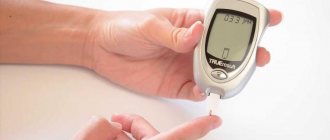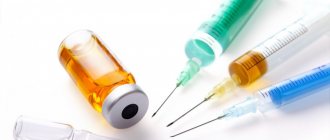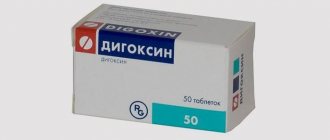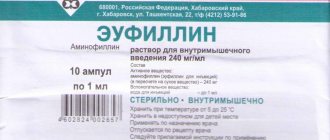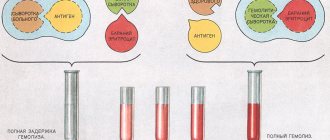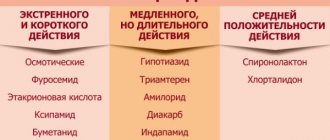5 / 5 ( 2 voices)
One of the diagnostic cardiological techniques that allows one to evaluate the work of the heart muscle not at rest, but during physical activity of varying strength, is the treadmill test or treadmillmetry. In practice, a similar test called bicycle ergometry, which requires an exercise bike, may be used as an alternative. What is a treadmill?
Methods of stress diagnostics of the functional state of the cardiovascular system
Treadmill (treadmill) is the name of a sports exercise machine, which is a treadmill. But to perform testing, you also need an electrocardiograph.
However, modern computer software will allow the doctor to simultaneously see on the monitor screen, and the program to analyze indicators, not only ECG, but also blood pressure, and, if necessary, estimate the amount of air consumed and CO2 released - ergospiromitria (pictured above).
What is a treadmill test
A treadmill is a treadmill, the speed of which can vary widely. The required speed range can be from 1 to 10 km/h. A patient on a moving treadmill walks or runs in accordance with the speed of the treadmill belt. In addition to changing the speed of movement, the load when performing a test can be increased by increasing the inclination angle of the treadmill. For the patient, such an increase creates a load corresponding to walking uphill.
Walking or running on a treadmill is performed under ECG monitoring, automatic measurement of blood pressure and heart rate. The choice of load intensity is carried out based on the goals of the study and the physical capabilities of each individual patient, in accordance with one of the treadmill test protocols. Constant, gradually increasing physical activity is performed until symptoms appear indicating poor tolerance or until maximum or submaximal heart rate (HR) is achieved.
Studies performed on a treadmill are considered more familiar and physiological than on a bicycle ergonometer. Due to the fact that patients are able to cope with greater loads on a treadmill than on an exercise bike, the results obtained using the treadmill test can be considered more indicative, since they can be used for diagnostic tests in physically unprepared patients.
Important! Carrying out stress tests allows, based on typical manifestations, to identify not only a disease of the cardiovascular system, but also its type and nosological form, which is extremely important when choosing the optimal treatment tactics.
Treadmill used for stress testing
How is the procedure performed?
The treadmill test can be performed both for outpatients in outpatient settings and in hospitals. Before the start of the study, blood pressure is measured and electrodes are fixed on the chest to record an ECG. During the treadmill test, continuous ECG recording in at least three standard leads is recommended. After fixing the electrodes and the tonometer cuff on the shoulder, the treadmill begins to move. Typically, according to the Bruce protocol, the initial speed of the treadmill is 2.7 km/h, with its subsequent increase every 3 minutes, and the inclination of the treadmill is 0% and above, that is, the patient walks uphill. An ECG is recorded every three minutes. Usually three minutes is enough for a person’s heart to adapt to the load. If this does not happen, ischemia occurs.
The treadmill test takes no more than 20-30 minutes. The study is stopped if the patient has complaints and/or myocardial ischemia is recorded by ECG, or a submaximal heart rate is achieved without complaints and without ischemia. After the end of the movement of the track, the ECG is recorded for every minute of the recovery rest period, that is, in the first five to ten minutes.
Purpose of the study
Functional diagnostics using a treadmill test is part of the general concept of “stress test”, used in cardiology to assess the state of the cardiovascular system and coronary reserve when performing various types of physical activity. The main goal of stress diagnostics can be considered to be the identification of coronary heart disease (CHD), when there are no manifestations of the disease.
IHD is a lesion of the heart muscle (myocardium), caused by insufficient blood supply, and, accordingly, oxygen starvation, caused by pathological narrowing of the coronary arteries. Atherosclerosis, which is the main reason for the decrease in the lumen of the vascular bed, causes a strong discrepancy between the need of the heart muscle for oxygen and its delivery through the bloodstream.
The clinical manifestation of myocardial oxygen starvation is angina attacks that occur against the background of physical activity, severe emotional arousal, overeating, as well as situations that can cause vasospasm (for example, exposure to the cold). Attacks of angina pectoris are expressed in the appearance of pain behind the sternum of a pressing, squeezing or burning nature, often radiating to the left arm, back or shoulder.
In addition to diagnosing asymptomatic ischemic heart disease, the use of a treadmill test is advisable when assessing the results of therapy. To do this, the results of the stress test obtained before taking medications are compared with the results obtained after a course of drug therapy. Treatment is considered effective and correctly selected if, after treatment, exercise tolerance has increased by one or more levels of the standard protocol.
Important! The main requirement for maintaining the quality of research is full compliance with the protocols for conducting treadmill tests and the criteria for their termination.
Contraindications to the procedure
Contraindications to bicycle ergometry and treadmill tests must be taken into account. The doctor needs to provide a complete picture of your well-being so that the diagnosis does not cause harm. Not everyone is allowed to be tested. It is strictly prohibited when:
- previous myocardial infarction within 2 weeks before the procedure;
- presence of unstable angina;
- the presence of some heart rhythm abnormalities;
- lack of blood circulation;
The test is prohibited for people who have previously been diagnosed with a heart attack.
- the presence of certain diseases;
- severe illnesses accompanied by fever;
- if there is a history of stroke within six months before the procedure.
In the presence of the listed deviations, the treadmill test and bicycle ergometry are strictly prohibited. Doctors also identify relative contraindications. These include:
- heart rhythm disturbance;
- presence of arterial hypertension;
- moderate diseases of internal organs;
- heart defects of moderate severity.
In the presence of the listed deviations, the procedure is carried out with caution. Diagnosis is carried out under the careful supervision of a doctor.
In case of heart defects, the treadmill test is strictly prohibited
Bruce Protocol
The protocols used to evaluate the results of a treadmill test differ in the type of load distribution (constant or graded) and the presence of rest breaks. The optimal protocol is considered to be one that allows you to achieve borderline indicators in 9–12 minutes of exercise. This time period allows, on the one hand, to ensure the maximum volume of aerobic exercise, and on the other, to make an adequate assessment of all hemodynamic parameters.
When undergoing treadmill testing, Bruce protocols are used, which provide for a multi-stage increase in load by increasing the speed of movement and the inclination angle of the treadmill. Carrying out a study according to the Bruce protocol implies the following conditions:
- The minimum time interval for changing load levels should be 3 minutes.
- Throughout the study, and for 5-8 minutes after its completion, all symptoms and signs that the patient experiences (chest pain, headache, blood pressure, ECG and heart rate) should be recorded.
- To obtain reliable data, the study should be completed.
Table: Bruce Standard Protocol
| stage | Track speed | Blade elevation angle % |
| 1/2 | 2,7 | — |
| 1 | 2,7 | 10 |
| 2 | 4,0 | 12 |
| 3 | 5,5 | 14 |
| 4 | 6,8 | 16 |
| 5 | 8,0 | 18 |
| 6 | 8,9 | 20 |
| 7 | 9,6 | 22 |
If the patient's condition raises doubts about the possibility of performing a stress test according to the standard protocol, it is recommended to conduct a study using a modified protocol, which provides for a slight increase in the load in the first stages.
Table: Modified Bruce Protocol
| stage | Track speed | Blade elevation angle % |
| 1 | 2,7 | — |
| 2 | 2,7 | 5 |
| 3 | 2,7 | 10 |
| 4 | 4,0 | 12 |
| 5 | 5,4 | 14 |
| 6 | 6,7 | 16 |
| 7 | 8,0 | 18 |
| 8 | 8,8 | 20 |
| 9 | 9,6 | 22 |
The main purpose of the treadmill test is to bring the cardiovascular system to a state of maximum tension, during which abnormalities in cardiac activity are determined using diagnostic tools. When conducting a study, not only ECG and tonometry data are informative, but also the stage at which submaximal indicators are achieved.
What is bicycle ergometry
This study is carried out on an exercise bike. The patient needs to pedal at a certain speed, approximately 1 turn per second . The program built into the bike automatically sets the load, increasing the resistance force on the pedals.
The device has several modes:
- Continuous . During the study, the load values remain unchanged.
- Intermittent . Before changing the load, the patient is given a break.
- Continuously increasing . The load increases gradually, without interruptions.
- Tempo method . The load is increased in equal amounts at certain intervals.
The type and maximum value of the load is determined by the doctor conducting the study. During the test, data from electrodes attached to the patient is transmitted to a computer monitor.
Bicycle ergometry is stopped in the following cases:
- Predetermined readings have been reached.
- The pressure has dropped 10 mm below the original or risen above 220 mm.
- The patient has complaints.
- Shortness of breath and pallor appeared.
- Pathological changes appeared on the ECG.
The procedure is stopped within a minute, gradually reducing the load. An ECG is additionally taken before and after bicycle ergometry. Results are provided within 15-20 minutes .
Physiological changes in angina pectoris
The physiological changes that occur in response to an increasing amount of stress in the body depend on the amount of muscle mass involved in the process. The greater the load, the more the heart rate increases and, accordingly, the myocardial need for oxygen increases. Since oxygen consumption from the coronary arteries and the heart muscle, even at rest, is at its maximum level, compensation for the missing volume of blood flow occurs through dilatation (expansion) of the coronary arteries.
With atherosclerotic vascular damage, such expansion is impossible. In this regard, in patients with stable angina pectoris, when a threshold is reached, after which an increase in the volume of coronary blood flow does not occur, pain occurs. The moment pain appears is considered the moment of maximum stress on the cardiovascular system and is called the internal threshold of angina.
When assessing the effectiveness of treatment, it is advisable to use an index characterizing myocardial oxygen consumption. It is defined as twice the heart rate multiplied by systolic blood pressure. There are 2 ways to calculate your maximum heart rate (HR):
- The easy way. The patient's age should be subtracted from the number 220. For example, 220 – 50 = 170, where 20 is the patient’s age, and 170 is the maximum number of heartbeats per minute. To calculate submaximal indicators, the result obtained is multiplied by 60-90%.
- The hard way. The submaximal heart rate is calculated using the following formula: HR = resting heart rate + K * (215 - patient age - resting heart rate). Where K is the coefficient for physically trained people or athletes - 0.9, for absolutely healthy people - 0.8, for patients with coronary heart disease - 0.7, for those who have suffered a myocardial infarction - 0.6.
Important! The moment of development of angina pectoris is considered an indicator characterizing the maximum load for a particular patient.
Electrocardiographic changes in the ST segment and T wave during myocardial ischemia
Interpretation of results
The results obtained are assessed by the doctor conducting the test using a computer program, as well as by the attending physician who referred the patient for examination.
The protocol must indicate the speed of the track and the level of its inclination. Attached are ECG recordings obtained at every third minute of movement and at every first minute of rest in the first 5-10 minutes. The ECG evaluates the heart rate, the nature of the ST segment (its rise or fall indicates ischemia), the nature of the T wave (indicates ischemia).
The result of a treadmill test may be negative, equivocal, or positive. The test is considered negative if, during exercise, a submaximal heart rate is reached (140-150 per minute), and no complaints and/or ischemia are registered on the ECG. This means that the patient did not have CHD. The test is considered positive if there are complaints of chest pain, shortness of breath and/or ischemia according to the ECG.
The protocol must indicate the speed of the track and the level of its inclination. Attached are ECG recordings obtained at every third minute of movement and at every first minute of rest in the first 5-10 minutes. The ECG evaluates the heart rate, the nature of the ST segment (its rise or fall indicates ischemia), the nature of the T wave (indicates ischemia).
Preparation
Preparation for a treadmill test involves adjusting the drug therapy used to treat the cardiovascular system and changing the patient’s regimen. The question of discontinuing certain medications is decided by the doctor. If a decision was made not to interrupt treatment, the name of the drug, quantity and frequency of administration are indicated in the medical report. This will make it possible to conduct a repeat study, either taking into account adjustments for the medications taken, or under absolutely identical conditions.
When conducting a stress test, it should be remembered that discontinuation of vasodilators always increases the sensitivity of the test. However, abrupt withdrawal is also fraught with a number of side effects. For example, increasing the load when stopping β-blockers can cause tachycardia. Therefore, it is advisable to start discontinuing medications several days before the examination. Cardiac glycosides, which can significantly complicate the interpretation of the results, are discontinued within 2 weeks.
2 days before the study, you should stop taking antianginal drugs belonging to the groups of calcium antagonists, calcium channel blockers and ACE inhibitors. Nitroglycerin is discontinued 2 hours before diagnosis. Before performing the treadmill test, do not stop taking anticoagulants (Cardiomagnyl, Aspirin) and hypoglycemic agents (Diaformin, Diabeton, insulin).
Recommendations for changing the patient's regimen include compliance with the following points:
- refusal to eat 4–6 hours before the test;
- refusal or reduction in the number of cigarettes smoked;
- reducing the amount of coffee consumed, completely eliminating it several hours before diagnosis;
- exclude any physical activity on the day of the study.
When performing treadmill testing, the patient should be dressed in comfortable clothing that allows physical movement and allows access to the chest and limbs.
Long-acting nitrates are discontinued 12 hours before the procedure
Indications for the procedure
Indications and contraindications for the treadmill test must be clarified in advance. Thanks to this, the risk of complications can be significantly reduced. Typically, the diagnostic method is used to confirm the symptoms of ischemic disease. The procedure helps control a person’s condition after certain surgical interventions and serious disturbances in the functioning of the heart.
The treadmill test has the following indications:
- diagnosis of ischemic heart disease;
- establishing the degree of neglect of angina pectoris and the effectiveness of its therapy;
- selection of load for rehabilitation of patients with cardiovascular diseases.
This research method is indicated to determine the degree of angina pectoris
Using the procedure, the doctor determines the patient’s level of endurance and response to intense stress. In the future, he selects the safest rehabilitation therapy. The treadmill test is occasionally recommended for people who want to get a physically demanding job.
The diagnostic method allows you to determine the type of heart rhythm disorder. The procedure helps to detect disturbances in blood circulation. Detects diseases in the early stages. The diagnostic method is highly accurate.
When carried out correctly, it is not capable of causing various types of complications.
Carrying out
Before the treadmill test begins, the patient is placed on a couch and an ECG is recorded at rest. After assuming a vertical position, the electrodes located on the wrists are moved to the area of the collarbones or shoulders, and the electrodes located on the legs are fixed in the iliac region, on the lower back or in the area of the shoulder blades. The location of all 12 leads must be reflected in the report.
The volume of load performed on a treadmill is estimated in metabolic units (MET), reflecting the intensity of metabolic processes in the body. The initial value of 1 MET is equal to the resting metabolic rate. An increase in load causes a quantitative increase in MET. In patients with coronary heart disease, the maximum level of workload reaches no more than 8 MET; as a rule, an angina attack is recorded at this or lower level.
In healthy, physically undeveloped people who lead an inactive lifestyle, the MET indicator does not exceed 10. The indicators of athletes reach 16 MET. The stress test begins with a minimum load of 1.8–2.0 MET, increasing according to the protocol until submaximal heart rate is achieved or until the internal tolerance threshold is reached.
Table: Assessment of the functional class of angina in comparison with exercise tolerance
| Metabolic units MET | Exercise tolerance | Functional class of angina |
| more than 10 | extremely high | — |
| from 7 to 10 | high | I |
| from 4 to 7 | average | II |
| up to 4 | low | III |
| up to 2 | very low | IV |
Treadmill test results can be:
- positive when ECG signs of ischemia are detected, regardless of the appearance or absence of angina;
- negative when the threshold of maximum or submaximal heart rate is reached, but there are no clinical and ECG signs of ischemia;
- doubtful when there are no ECG changes, but the reliability of the results is questionable;
- uninformative when the study was interrupted due to fatigue or poor health of the patient.
Important! Blood pressure measurements taken by automated devices should be double-checked manually as patient movements may introduce errors.
When conducting a treadmill test, constant manual supervision by a doctor is required.
Indications
The use of stress testing in general and treadmill testing in particular can be considered a valuable tool used to detect myocardial ischemia and to determine the patient's level of exercise tolerance. In the latter case, the optimal level of heart rate is determined, which does not threaten the appearance of various complications during training, such as arrhythmia or increased blood pressure, but ensures the achievement of a sufficient level of aerobic exercise.
In addition, indications for diagnosis using a treadmill test are heart rhythm disturbances, 1st degree atrioventricular block, valvular heart defects, and post-infarction condition. If you have a pacemaker or a complete block of the left bundle branch (an element of the conduction system of the heart), there is no need to undergo a treadmill test, since its results will not be informative.
Indications and contraindications
An examination using a treadmill test is prescribed by a cardiologist. This is done to determine the degree of endurance of the heart during physical activity. The fact is that during active exercise, the heart’s need for oxygen increases, which is ensured by increased blood flow in the heart muscle.
But in the case of heart disease, increased blood flow will be hampered, and as a result, the heart muscle will experience oxygen starvation. An ECG taken during a treadmill test will certainly reflect signs of such “hidden” ischemia.
Indications for prescribing the test:
- Search for signs of ischemia.
- Diagnosis of atherosclerosis of coronary vessels.
- Chronic heart failure.
- Discomfort in the heart of unknown etiology without the manifestation of any other obvious symptoms.
- Suspicions of interruptions in heart rhythm that are not visible in a calm state.
- Monitoring the condition of the heart after surgical interventions (stenting, bypass surgery), heart attack.
- Selection of a suitable load at the rehabilitation stage.
But in medicine, the treadmill test is used not only for patients in cardiology departments. People who have never had complaints of heart problems can also be prescribed stress tests.
Category of people subject to testing:
- professional athletes;
- persons whose work involves being in extreme conditions (cosmonauts, pilots, fighter pilots, machinists, military);
- persons over 40 years of age with diagnosed pathologies: diabetes mellitus, arterial hypertension, obesity;
- long-term smokers.
The examination is carried out to assess the possible risks of developing heart failure or abnormal heart rhythm.
Despite the high information content of the study, it is still not possible for everyone.
Contraindications can be absolute, when the research is strictly prohibited, or relative.
Absolute contraindications include the following situations:
- if less than 2 weeks have passed since the acute myocardial infarction;
- if less than six months have passed since the acute stroke;
- severe forms of chronic heart failure;
- aortic aneurysm;
- angina pectoris;
- heart defects in the decompensated stage;
- infectious diseases in the acute phase;
- high blood pressure with a risk of developing a hypertensive crisis.
If there are relative contraindications, the doctor decides to cancel the test or postpone it until a more favorable moment.
Relative prohibitions include:
- arrhythmia;
- arterial and pulmonary hypertension;
- some types of heart defects;
- left ventricular aneurysm due to a previous heart attack;
- significant increase in cardiac size.


